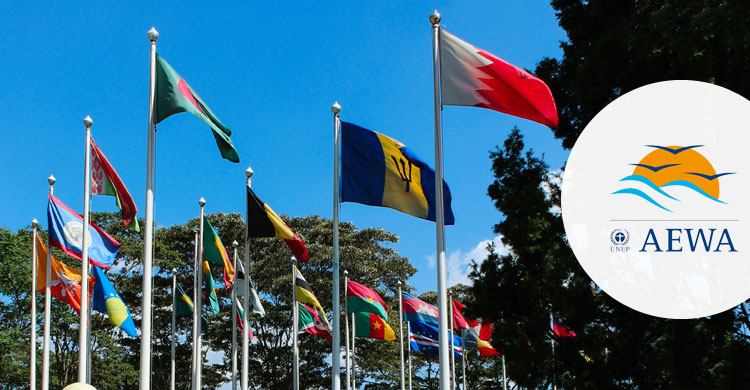New Journal Article Highlights AEWA’s Unique Place in International Environmental Law

© IISD
Bonn, 11 March 2016 – A recently published article in the Journal of International Wildlife Law & Policy examines the past and future development of AEWA from the perspective of international environmental law.
The article, “AEWA at Twenty: An Appraisal of the African-Eurasian Waterbird Agreement and Its Unique Place in International Law” written by the Technical Committee Environmental Law Expert, Ms Melissa Lewis, highlights the Agreement’s unique place amongst a range of environmental treaties, including the “big five” global conservation treaties1. The article examines how AEWA’s substantive provisions and institutional mechanisms have evolved over the past two decades and outlines some of the ways the effectiveness of the treaty could be enhanced in the future.

“I became increasingly fascinated with both bird conservation laws in general and in AEWA in particular during my time on the AEWA Technical Committee. When I noticed the sheer lack of academic literature on the Agreement, I decided to make AEWA the focus of my doctoral research,” said Lewis.
Throughout the article, factors are highlighted that distinguish AEWA from various other conservation treaties that operate within the Agreement Area – for instance, the Agreement’s flyway approach, firm emphasis on precaution, detailed provisions which apply at the population level, flexibility to evolve over time, involvement of civil society, and procedures for implementation review.
“Although AEWA faces a number of daunting challenges and there is an urgent need for improved prioritization of the Agreement’s activities, this should not overshadow the progress that the Agreement has achieved in its relatively short lifespan,” says Lewis. “AEWA clearly occupies a unique place within both the CMS Family and the wider cluster of biodiversity-related multilateral environmental agreements,” underlines Lewis.
The article forms the first part of a broader PhD project being undertaken by Ms Lewis at Tilburg University’s Department of European and International Public Law in the Netherlands, which critically examines AEWA’s contribution to the conservation and management of migratory birds at the flyway level. Several of the issues touched upon in this first article will be examined more closely in a series of further journal articles, to be published in the course of 2016 and 2017.
Queries about the paper and requests for limited free access copies of the article can be sent to Melissa Lewis directly at: M.G.Lewis@uvt.nl
1According to Lewis, the “big five” global conservation treaties are: the Ramsar Convention on Wetlands of International Importance Especially as Waterfowl Habitat, the World Heritage Convention (WHC), the Convention on International Trade in Endangered Species of Wild Fauna and Flora (CITES), the Convention on the Conservation of Migratory Species of Wild Animals (CMS) and the Convention on Biological Diversity (CBD).
Last updated on 24 May 2016


